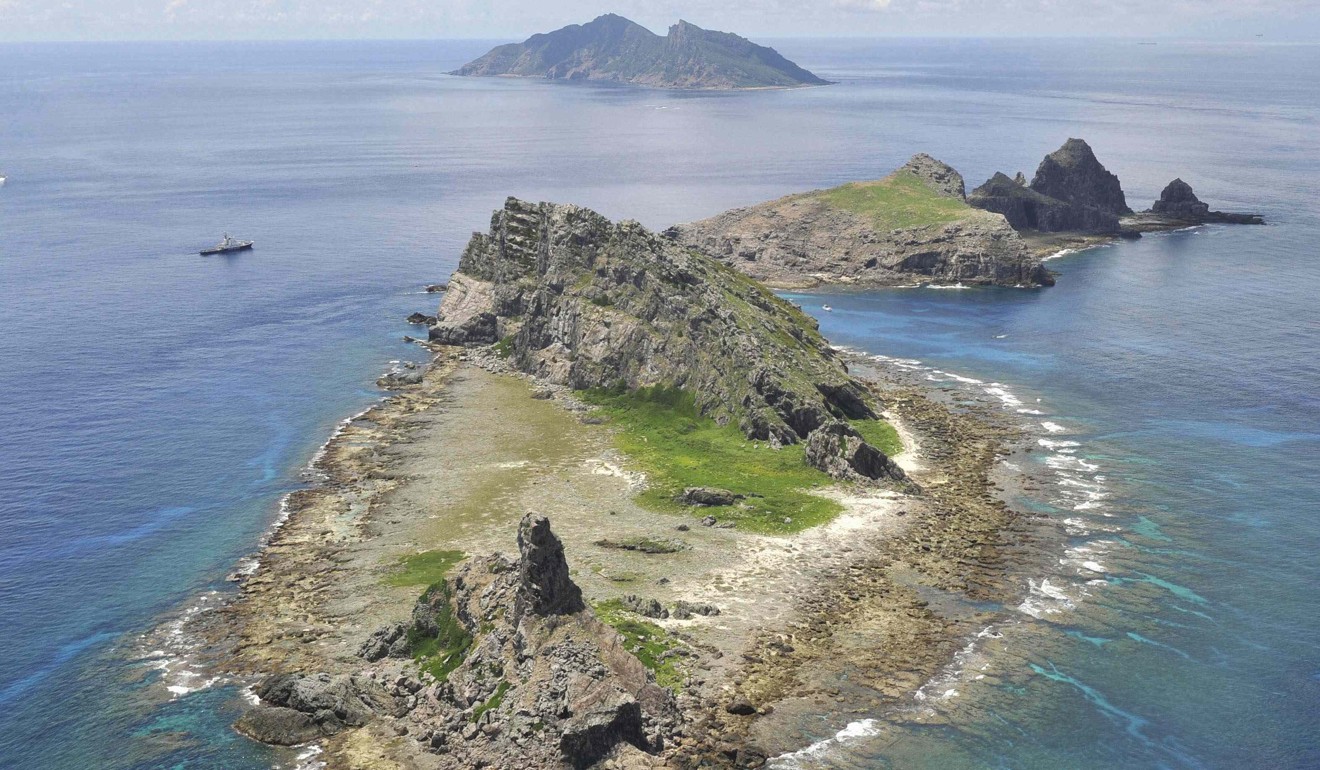
Beijing may be ‘testing Tokyo’s resolve’ with drilling missions in contested parts of East China Sea
- The two countries’ Exclusive Economic Zones overlap in East China Sea, leading to dispute over precisely where border between nations should be drawn
- An agreement between the two nations to work together to extract natural resources on hold since tensions intensified over the sovereignty of disputed islands
Tokyo has lodged an official complaint with Beijing after a Chinese exploration vessel was identified operating in a contested part of the East China Sea, with analysts in Japan suggesting Beijing was “testing” Tokyo’s resolve.
The Chinese ship was sighted in mid-November apparently drilling test boreholes into the seabed in search of oil or gas deposits close to the median line Japan proposed should serve as the maritime border between the two nations.
‘Glad to see you,’ Chinese warship crew tells Japanese sailors
The two countries’ Exclusive Economic Zones overlap in the East China Sea, leading to the dispute over precisely where the line should be drawn, while there is also concern in Japan that resources extracted on the Chinese side may actually be coming from deposits in the Japanese sector.

Tokyo has proposed the problem be resolved by jointly developing the resources in the region, with Prime Minister Shinzo Abe approaching Chinese President Xi Jinping on the sidelines of the Group of 20 summit in Argentina to repeat Tokyo’s call for the two governments to reopen talks.
An agreement reached in 2008 between the two nations to work together to extract any natural resources has been put on hold since tensions intensified over the sovereignty of the Diaoyu Islands – which are known as the Senkaku islands in Japan.
Japan and US plan joint armed forces response to Chinese threat to islands
Abe’s request to Xi was likely prompted by the Chinese test drilling operation, which Chief Cabinet Secretary Yoshihide Suga criticised in a regular press conference in Tokyo on Monday.
“It is extremely regrettable that China has continued its unilateral development activities in the waters, while the boundary [between Japan and China] has not been set,” he said.
The best thing would have been for both sides to negotiate and keep to their agreements, but China does not seem to want to keep its word
Japan made an official protest through diplomatic channels “immediately” after the ship’s activities were reported, he said.
Yoichi Shimada, a professor of international relations at Fukui Prefectural University, said Beijing was exerting pressure on Japan to determine the resolve within the Abe administration to resist.
“This is a typical tactic that we have seen the Chinese government use time after time and often you will see Beijing backtrack – just as they have in the trade war with the US – when they meet resistance,” he said.
“If they sense that their adversary is weak, they continue to push and I believe the problem in this case is that the Japanese government has made no effort to carry out similar exploration for resources. The best thing would have been for both sides to negotiate and keep to their agreements, but China does not seem to want to keep its word.”
Shimada also said the test drilling was part of a broader Chinese plan to lay claim to larger areas of the East China Sea and boost its claim to sovereignty over the Diaoyu Islands, in much the same way it has in the South China Sea.
“The Senkakus are relatively close to the area where this ship is operating and I believe it is quite significant that exploration has already shown that there is little oil and gas in this area at all,” he said. “China’s real intention is to get closer and closer to the Senkakus and to use their strong presence to bolster their claims.
“Right now, they are testing the resolve of the Japanese government and waiting to see just how firm Tokyo is in response to this provocation.”

